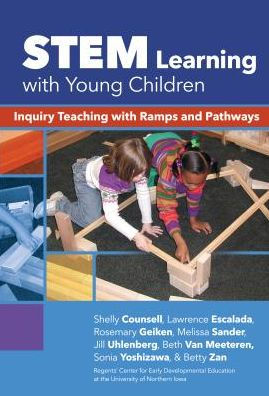5
1
9780807757499


STEM Learning with Young Children: Inquiry Teaching with Ramps and Pathways available in Paperback, eBook

STEM Learning with Young Children: Inquiry Teaching with Ramps and Pathways
- ISBN-10:
- 0807757497
- ISBN-13:
- 9780807757499
- Pub. Date:
- 12/28/2015
- Publisher:
- Teachers College Press
- ISBN-10:
- 0807757497
- ISBN-13:
- 9780807757499
- Pub. Date:
- 12/28/2015
- Publisher:
- Teachers College Press

STEM Learning with Young Children: Inquiry Teaching with Ramps and Pathways
$34.95
Current price is , Original price is $34.95. You
$34.95
This item is available online through Marketplace sellers.
$23.22
This item is available online through Marketplace sellers.
34.95
Out Of Stock

Product Details
| ISBN-13: | 9780807757499 |
|---|---|
| Publisher: | Teachers College Press |
| Publication date: | 12/28/2015 |
| Series: | Early Childhood Education Series |
| Edition description: | New Edition |
| Pages: | 216 |
| Product dimensions: | 6.00(w) x 9.10(h) x 0.50(d) |
About the Author
What People are Saying About This
From the B&N Reads Blog

